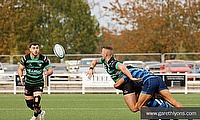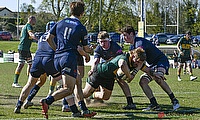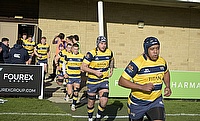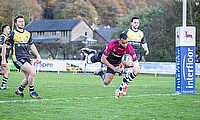National League reshuffle
In recent weeks Talking Rugby Union has focused on potential reform to the Championship and the leagues immediately below it within the RFU’s domestic structure following reports that significant problems threaten the existence of a second-tier professional league in England.
This week let’s forget that particular brand of doom-and-gloom and operate under the (idealist) assumption that Champions rugby as a professional league will survive and ultimately thrive.
Last week Matthew Wood proposed an interesting concept to turn the three divisions immediately below the Premiership (Championship, National League 1 and National League 2) into a four-conference competition organised by geographical location, a concept I would urge all to read and consider. But should the Championship survive untouched, could we see a remodelled semi-professional tier of English Rugby?
Using the existing model a new, super National League would comprise the 48 teams currently split evenly between National League 1 and National Leagues 2 North and South. In order to prevent any significant fixture congestion, these 48 teams would be split into three conferences of 16 teams apiece, organised by geographical location to reduce travel time and expenses.
Here’s how would line up:
NL1 – National League 1
NL2N – National League 2 North
NL2S – National League 2 South
Northern Conference:
Blaydon (NL1)
Caldy (NL2N)
Chester (NL2N)
Darlington (NL1)
Fylde (NL1)
Harrogate (NL2N)
Hull Ionians (NL1)
Macclesfield (NL1)
Otley (NL2N)
Preston (NL2N)
Sale FC (NL2N)
Scunthorpe (NL2N)
Sedgley Park (NL2N)
Sheffield Tigers (NL2N)
Tynedale (NL2N)
Wharfedale (NL2N)
Midlands Conference
Ampthill (NL1)
B Stortford
Birmingham Moseley (NL1)
Bury St. Edmunds
Cambridge (NL1)
Chinnor (NL2S)
Clifton (NL2S)
Cinderford (NL2S)
Coventry (NL1)
Hartpury (NL1)
Hinckley (NL2N)
Leicester Lions (NL2N)
Loughborough Students (NL1)
Luctonians (NL2N)
South Leicester (NL2N)
Stourbridge (NL2N)
Southern Conference
Barnes (NL2S)
Barnstaple (NL2S)
Blackheath (NL1)
Canterbury (NL2S)
Esher (NL1)
Exmouth (NL2S)
Henley (NL2S)
London Irish Wilde Geese (NL2S)
Old Albanian (NL1)
Old Elthamians (NL2S)
Plymouth Albion (NL1)
Redingensians
Redruth (NL2S)
Rosslyn Park (NL1)
Taunton (NL2S)
Worthing (NL2S)
As you can see the conferences are based predominately on geographical location and proximity of teams to one another. The Northern Conference therefore is comprised of 11 of the 16 teams in the National League 2 North combined with the five northern National League 1 teams.
The Midlands conference meanwhile draws in the three National League 1 teams as well the five in National League 2 North located in the Midlands, alongside the eight most geographically northern teams from National League 2 South.
Ertswhile the Southern Conference features the remaining five National League 1 teams in conjunction with the eleven remaining National League 2 South sides.
So how would it play out on the pitch? Every team in each conference would play the others home and away for a total of 30 games within an isolated league structure, the same as it is now. Ensuring a continuation of the current schedule means gametime would not be limited for all participants and there are no additional travel costs or logistics to incur for less affluent teams.
Following the completion of the ‘regular’ season, the two teams ranked #1 and #2 in their respective conferences would then proceed to an eight-team play-off joined by two – to borrow an Americanism - ‘wildcard’ teams. Determined by points total, this would be the two teams who finished with the best points totals outside of the first or second place team in their conference. Conventional logic would assume this would be two teams who finished third in their respective conference but depending on points amassed could be a further two teams from just one of the three conferences (for example the Northern).
These eight teams would then be ranked 1-8 by their final points totals and would then face each other in reverse order (1 versus 8, 2 versus 7 etc.). The subsequent games would continue to be decided by the end-of-season rankings to ensure competiveness late into the season given that the higher your final points total, the easier path to the ‘Grand Final’ would be.
Following the first two play-off ‘rounds’ the two remaining teams would meet to decide the final league champion.
It should be remembered that this is simply a possible template to follow should the RFU ultimately decide to ring-fence the professional leagues (Premiership and Championship) and integrate National Leagues 1, 2 North and 2 South into a unilateral second tier of English rugby.
The benefits of organising the semi-professional leagues wholly by geography are obvious, with specific focus on a reduction in travel time and travel costs. Integrating the three leagues / two tiers however would also allow lower-league clubs greater exposure to a higher level of competitive rugby and would be augmented by an RFU mandated loan/farm system to supplement ‘second tier’ clubs with young Premiership players in need of gametime (a similar proposal was included in my concept of a semi-professional Championship).
The most pertinent trepidation regarding this radical new structure however would be the enduring concern of (un)competiveness. Whilst National Leagues 1 and 2 do currently operate a system of promotion and relegation, as is usually the case in semi-professional rugby there is a clear divide between the NL1 teams currently hunting for promotion into the Championship and who have the capacity to support a move into professional rugby (Ampthill, Plymouth, Moseley) and those who are currently languishing at the bottom of the North and South National League 2 (Exmouth, Sheffield Tigers) and could be forced back into regional union. A comprehensive survey would have to be conducted prior to the implementation of a new league in order to ascertain which clubs have the financial means to perform consistently as part of a ‘second tier’ level, especially as it would severely.








